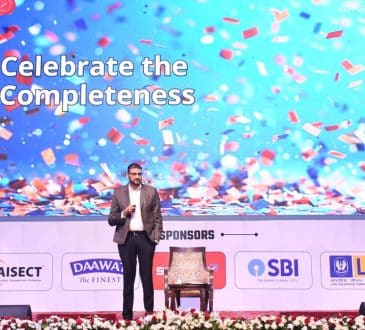Really Real Recognition: 4 Shifts in Leadership for Greater Employee Appreciation

“As we express our gratitude, we must never forget that the highest appreciation is not to utter words, but to live by them.” — John F. Kennedy
It’s Employee Appreciation Day. As a leader, it’s a day to recognize the contributions of every member of your team. That said, most once-a-year observances will ring hollow inside a workplace that isn’t already devoted to actively appreciating its employees. These annual words of celebration might sound good, but they won’t be indicative of principles you’re practicing every day as a leader.
As such, you won’t reap all the rewards of more satisfied and appreciated employees. Well-recognized employees are 45% less likely to leave within two years, and those who receive valuable feedback are five times more engaged at work. What’s more, happy workers are routinely found to be more productive no matter their skill level.
Creating such an appreciative working culture isn’t automatic, and it often demands shifts in your own leadership — a few purposeful pivots away from the status quo. These tweaks in leadership style serve to shore up a working culture that not only recognizes employees for their contributions, but does so routinely and with an eye toward the individual. After decades of coaching successful executives around the world, these are the four shifts in leadership style I’ve found to yield greater employee appreciation across the board.
- Make celebration a part of your routine.
Only 35% of workers are celebrated on a monthly basis, and over half of all workers would like more recognition for their efforts. Why? Because celebration is not an inherent part of the workplace routine.As leaders, Employee Appreciation Day (EAD) is much more than a day. It is our annual reminder to celebrate our employees and their accomplishments. EAD is not simply some isolated office holiday trotted out once a year to send out a company-wide thank you. It is an edict to routinely recognize your employees’ contributions and create a working culture that actively makes everyone feel appreciated.
So don’t just celebrate today. Make employee celebrations a part of your leadership routine. Resolve to celebrate one employee every morning. Devote one day a week to celebrating a major team accomplishment. Pick an MVP every month and make them feel extra special. Thank three people in person (or on Zoom) before logging off each day.
Celebrations bolster our perceived social support, giving us confidence to take risks and perform at our best. Additionally, fun in the workplace has been directly linked to productivity and employee well-being. These celebrations not only help individuals feel more appreciated. If carried out consistently, they create an environment of appreciation and recognition that sustains itself.
- Offer individualized growth opportunities.
Let’s imagine you’ve planted a garden of mixed fruits and vegetables — some carrots, beets, strawberries, and lettuce. If you cared for them all exactly the same with enough water and sunshine, your plants would likely produce fine. However, if you cared for them all according to their individual needs, your end-of-the-season bounty would be much greater.Studies show that growth opportunities are a critical component of job satisfaction — that’s the water and sunshine. Even employees themselves see the benefits, with 39% of workers considering the potential for future growth a significant influence on workplace happiness. As a leader, if you’re offering growth opportunities, you’re keeping your garden alive and producing.
But what if you want your garden to thrive? That’s when leaders have to dive deep, sitting down with their team members one by one and offering growth opportunities tailored to the individual. Every individual needs room to grow, but finding a space that fits each employee is how you get the absolute best out of your team.
- Establish a team-wide mentor program.
Purposefully pairing up your team as mentors and mentees can be transformative, and its passive benefits are game-changing.A mentor program has a two-fold impact on almost any business: (1) it awards and recognizes experts in every field, and (2) it supports less experienced employees by way of veteran insights that are already approved by the company. With so much recognition and support built into the system, it should come as no surprise that 9 out of 10 workers who have a mentor say they are happy at work.
This is to say nothing of all the ancillary benefits of a well-run mentoring program. Employees with a mentor have a 50% higher retention rate. Additionally, a mentoring program provides structured and intentional socialization across the company, and workplace friendships are becoming absolutely critical.
- Offer flexibility geared toward the individual.
When it comes to flexibility in the workplace, everybody wants it. They just each want something a little different.Work flexibility isn’t about mandating that everyone works from home on Tuesday. Work flexibility is about finding a compromise between the demands of the workplace and the needs of the individual. When done correctly, it can serve as a big boon to employee empowerment and overall job satisfaction. When done incorrectly, it can create inefficiencies that do not exist without any hope of a payoff.
A joint study between academics in Italy and Amsterdam conducted an in-depth psychological analysis of flexibility in the workplace, designating specific “job control” and “boundary control” profiles that appeared most frequently. What they discovered is that having control over social boundaries (boundary control) was just as important to employees as having control over where and when they work (job control). Different profiles ideally needed different amounts of each, but it was never a good idea to offer one in lieu of the other.
So offer flexibility, but never make it a blanket statement.
Get real with your recognition.
No matter the day, employee appreciation is a vital part of a successful business. That said, you can’t expect to experience its benefits unless you make it more than a solitary celebration. Make employee appreciation a fundamental part of your working culture.
Written by Dr. Sam Adeyemi.
Have you read?
Best Countries for Americans to Move to.
Best cities in the world.
Largest Economies in the World by GDP (PPP).
Largest Asset Owners In The World.
Best Countries for Work-Life Balance.
Bring the best of the CEOWORLD magazine's global journalism to audiences in the United States and around the world. - Add CEOWORLD magazine to your Google News feed.
Follow CEOWORLD magazine headlines on: Google News, LinkedIn, Twitter, and Facebook.
Copyright 2025 The CEOWORLD magazine. All rights reserved. This material (and any extract from it) must not be copied, redistributed or placed on any website, without CEOWORLD magazine' prior written consent. For media queries, please contact: info@ceoworld.biz








